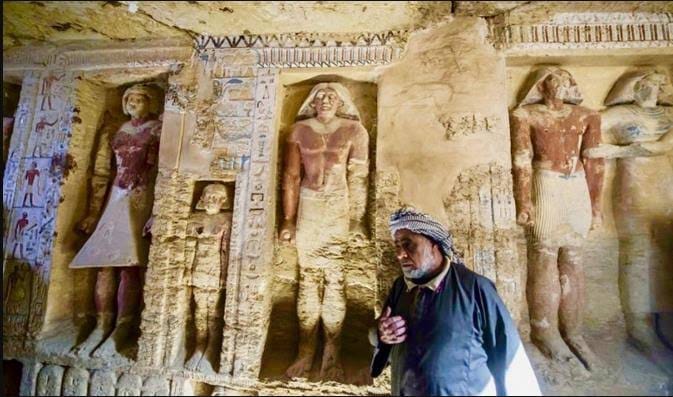Egyptian authorities announced on Saturday the discovery of a new archaeological site in the El-Husseiniya district of Sharqiya Governorate, situated north of Cairo, revealing remains that date back to the 4th century BC.
The find, located at the Tell El-Faraoon site, was made by a British archaeological team from the University of Manchester. Excavations uncovered a range of well-preserved architectural remains, offering rare insight into life during Egypt’s Late Period.
Among the most notable discoveries were residential complexes believed to have been constructed during the early to mid-4th century BC. These included rare examples of “tower houses,” multi-storey buildings constructed with thick foundational walls. According to Mohamed Ismail Khaled, Secretary-General of Egypt’s Supreme Council of Antiquities, the sturdy design of these structures suggests they were built to support large numbers of residents and may have functioned as collective dwellings in densely populated communities.
Khaled highlighted that such tower houses were a recurring architectural feature across the Nile Delta during the Late Period and into the Roman era. Their presence indicates that the region was not only inhabited but also experienced organized urban development with attention to space and population needs.
In addition to residential buildings, the excavation revealed utilitarian structures used for storage and livestock. These facilities suggest that the area supported both domestic and agricultural activity, pointing to a self-sustaining community.
Archaeologists also made important findings in the sacred section of the site. They unearthed a large limestone floor along with the remains of two substantial mudbrick columns, originally coated in plaster. These architectural elements are believed to be remnants of a structure that flanked a ceremonial procession route. This pathway once connected a pylon from Egypt’s Late Period to the ancient temple of the goddess Wadjet, an important figure in Egyptian mythology often associated with protection and royal authority.
Evidence indicates that the processional route was in use for a time but had been abandoned by the mid-Ptolemaic period, suggesting a shift in religious or political significance during that era.
The temple of Wadjet itself, according to historical records, underwent reconstruction during the reign of Ramses II and again under King Ahmose II. These successive restorations highlight the temple’s importance over the centuries and its central role in the religious life of the region.
This latest discovery adds to the growing body of evidence that the El-Husseiniya area served as a vibrant residential and religious center during the Late Period of ancient Egypt, offering archaeologists and historians valuable information about the architectural styles, urban planning, and spiritual practices of the time.



